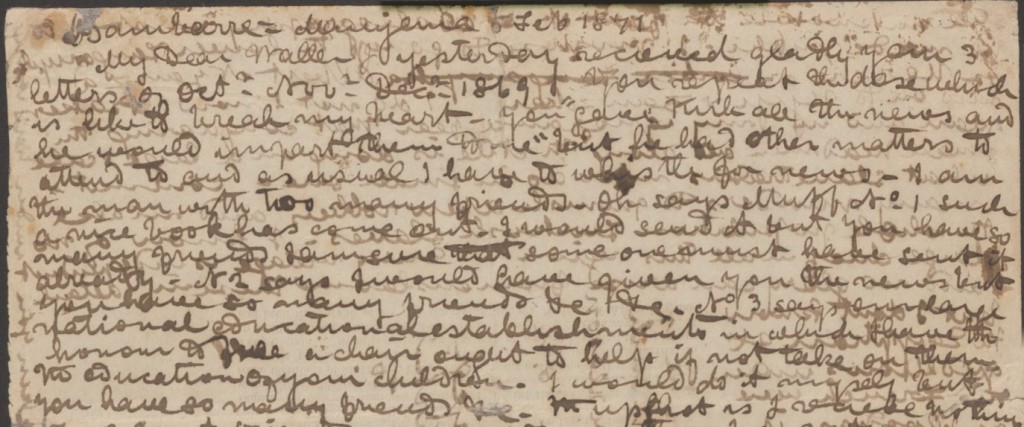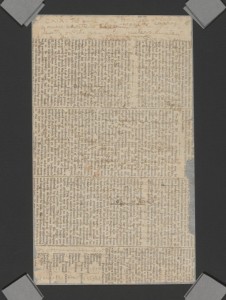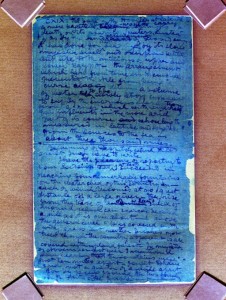CMT members – and particularly followers of our fledgling ‘Illegibles’ section – may be interested to learn something of the technique of multi-spectral digital imaging. It has been employed in the study of a substantial number of ancient manuscript texts, such as the Archimedes Palimpsest, the Dead Sea Scrolls, the Herculaneum Papyri, and the Petra Church Scrolls, and was recently the subject of a retrospective in the journal Antiquity. The technology was also featured on the Monday edition of Radio 4’s I.T. programme, ‘Click On’, in connection with the David Livingstone Spectral Imaging Project.
The project’s website provides before and after images of one of Livingstone’s letters, plus a transcription and commentary, as well as background information about both the explorer and the imaging techniques. Livingstone’s letter from Bambarre (Kabambare, eastern Congo), dates from 5th February 1871 (see image above), and besides revealing the desperate situation in which Livingstone found himself towards the end of his career, it provides a window into a fascinating material textual moment. Having run out of both paper and ink, Livingstone resorted to using old copies of the Standard newspaper and the Proceedings of the Royal Geographical Society as a writing support, and some local clothing pigment as substitute ink. Neither worked particularly well: the paper is now very worn and fragile, the manuscript text often unclear due to fading or bleed-through. The text of Livingstone’s Nyangwe Diary is almost entirely illegible in natural light (see images below). These palimpsests hint at the material privations through which Livingstone lived, and the text of Livingstone’s letter is a response to the first contact he had had with the outside world for several years. Thanks to spectral imaging, we can now read those spectral words.


